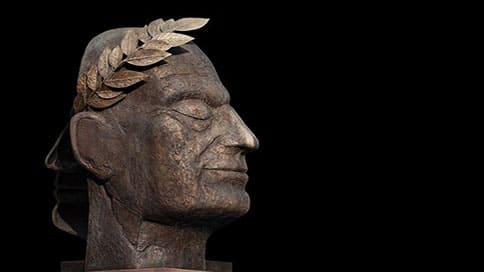

#Caesar cipher python code#
This creates a class with the original and cipher alphabets defined, now we need a way to convert in and out of our secret code format. Then we will use the slice features of python on the alphabet list to insert two blocks of the regular alphabet into our cipher. We will add an argument "N" that describes what the offset to the alphabet will be to construct the cipher alphabet. I will start by initializing a class called "ShiftCipher" (because Caesar, like Omlet Omelette, is too easy to misspell). You can also find the final code snippet here, or a more complex (partially documented) project on github. If you are new to python, I recommend starting with this post. Both of these rely on a conversion between the regular alphabet, and a cipher alphabet, so the most critical step is to create the cipher alphabet. To recreate this secret code in python, we have two tasks we need to accomplish - encryption, and decryption.

So these messages were usually assumed to be written in a different language, and there is no evidence that the code was ever broken during Caesar's lifetime. The fact that most people were incapable of reading really reduced the chances of a message being cracked.Īdditionally, there were lots of different languages, and nobody had ever heard of encryption before. You are graced with literacy however, which was not very common back in Caesar's days. This probably seems pretty simple to a clever reader like you, so you may be wondering how much security this really added. This aligns with "Z" in the cipher, so now we have:Ĭontinuing this process for each new letter, you end up with: We start with the letter "I", and see that aligns with the letter "F" in the cipher. For example, let's consider the phrase "I came, I saw, I conquered". When encoding a message, Caesar would look at the letter in unencrypted message, and replace it with the aligning letter from the Cipher alphabet. To encode his messages, Caesar created a cipher alphabet where the regular alphabet is simply shifted by three letters. As a result, his secret code is now called Caesar's Cipher (aka Shift Cipher, Caesar's Code, Rotation Cipher, or Caesar's Shift). He also happens to have been one of the first people in history to use cipher to encrypt his military messages. If you're just learning about him now I suggest starting here. Julias Caesar was a Roman politician and military general. In this post I will start with what is called Caesar's Cipher.

So I have decided to write up a guide to how these work. The resulting program ended up being both fun, and pretty beginner friendly. Naturally I started writing some code just in case. While reading the early chapters, I started thinking about how powerful I could have been in Medieval times if I had access to a computer and a python interpreter.

I would love to share much more about this book, but you're better off to just read it and I'll get on with my post. It carries on through WWI, WWII, early internet encryption, and ends with a breakdown of the expected uses of Quantum Computing. It starts with examples of secret codes (or ciphers) used in Ancient Rome, Medieval Scotland, and Victorian England. This all changed recently when I read a spectacular book called The Code Book. This was likely because modern cryptography seemed so complicated I didn't think I'd be able to make sense of it. As I started learning math and computer science, that interest strangely faded. Growing up I was always fascinated by hidden messages, secret codes, ancient languages, and all manner of disguised communication.


 0 kommentar(er)
0 kommentar(er)
